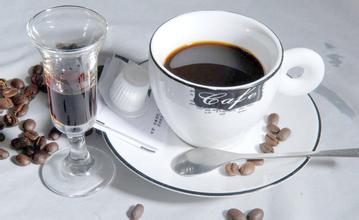Ethiopia Ethiopia
Introduction of Ye Jia Xuefei Coffee Fine Coffee beans
On my first day in Ethiopia, I met a beautiful girl's coffee stand near the Great Sacred Cathedral. To be honest, I was attracted by the beauty of the girl at first, not by the smell of coffee. I came to Africa for more than half a month and saw an amazing black beauty for the first time. No wonder Ethiopia gave birth to a beautiful woman.
The complexion is brown and wheat, the face is narrow, the nose is high, the eyebrows and eyes form a beautiful arc, there are light petal tattoos on the chin and left cheek, wrapped in striped shawls, printed narrow-legged trousers, slightly plump, hair pulled back at will.
So sitting on the small bench facing the street, smiling, at the foot of the coffee pot, one big and one small charcoal stove, a large plate of fried coffee beans, anyone can not help but stop.
The highlands of Ethiopia are the birthplace of coffee. The traditional drying method is still used to produce mocha-Hara beans (Harrar,Harari,Harer or Harar) at an altitude of about 2,000 meters near Harrar in the east. Hara has a medium texture with a fruit wine-like flavor, and a good Hara is as wild as the best Yemenmoka. Dried beans from other regions, such as Gimbi or Ghimbi, Jima,Jimma or Djimah and Sidamo, are equally wild and wine-like, but not so rich and a little rough. The water-washed mocha from Jinbi in the west has the same sour wine as Hara, but it is packaged with a richer and balanced feel and a thicker texture. As for water-washed beans from the south, such as Sidamo and Gemma, they keep less sour wine and replace them with more gentle and delicate flavours of lemon and flowers. The best is produced in a high and narrow area of Sidamone, called Yirgacheffe, whose rich taste brushes the taste buds and leaves an endless aftertaste, while its slightly sour taste is similar to Sumatra and swims in a rich texture; in addition, it adds a unique soft floral fragrance, which is really the only coffee in the world.
Traditional esoteric beans are graded according to the proportion of defective beans. Washed raw beans such as G1 (Defects 0-3) and G2 (Defects 4-12) are G3 (Defects 13-25) G4 (Defects 25-45) G5 (Defects 46-100). Since 2008, the government of Ethiopia has set up Ethiopia Commodity Exchange what we call the ECX system, and raw coffee beans from various regions will be delivered to this unit after processing, and then through cups. The coffee is classified into regional flavor and non-regional flavor, and then classified into two grades. Shoucheng coffee is also required to produce the highest grade raw beans with regional flavor in this system.

Important Notice :
前街咖啡 FrontStreet Coffee has moved to new addredd:
FrontStreet Coffee Address: 315,Donghua East Road,GuangZhou
Tel:020 38364473
- Prev

Introduction to the difference in flavor between Colombian coffee beans and Arabica coffee beans
Colombian boutique coffee beans introduce Arabica is a large category including Colombian coffee is now divided into three major categories ah Rabica Robusta Liberia. No one has a lot of classifications, Tibica, Katim and so on. Beans are classified according to the detailed varieties and handling methods of the country. I don't know how to say, rabbi Karobsta or anything. There are very few in Liberia. The quality of Rabica is better than that of Rabica.
- Next

90 + Honey Kiss Coffee Flavor description High-quality treatment characteristics of manor country Vietnam
Boutique 90 + Honey Kiss Coffee in 2009, this coffee was named after Nectar from Shakisso, meaning it has the same flavor as nectar from Ethiopia. Nekisse is characterized by a creamy and smooth taste, a strong berry sauce, and some batches even have a mixture of chamomile and a variety of tropical fruits. Although it was originally planted in Shakisso producing areas
Related
- Detailed explanation of Jadeite planting Land in Panamanian Jadeite Manor introduction to the grading system of Jadeite competitive bidding, Red bid, Green bid and Rose Summer
- Story of Coffee planting in Brenka region of Costa Rica Stonehenge Manor anaerobic heavy honey treatment of flavor mouth
- What's on the barrel of Blue Mountain Coffee beans?
- Can American coffee also pull flowers? How to use hot American style to pull out a good-looking pattern?
- Can you make a cold extract with coffee beans? What is the right proportion for cold-extracted coffee formula?
- Indonesian PWN Gold Mandrine Coffee Origin Features Flavor How to Chong? Mandolin coffee is American.
- A brief introduction to the flavor characteristics of Brazilian yellow bourbon coffee beans
- What is the effect of different water quality on the flavor of cold-extracted coffee? What kind of water is best for brewing coffee?
- Why do you think of Rose Summer whenever you mention Panamanian coffee?
- Introduction to the characteristics of authentic blue mountain coffee bean producing areas? What is the CIB Coffee Authority in Jamaica?

